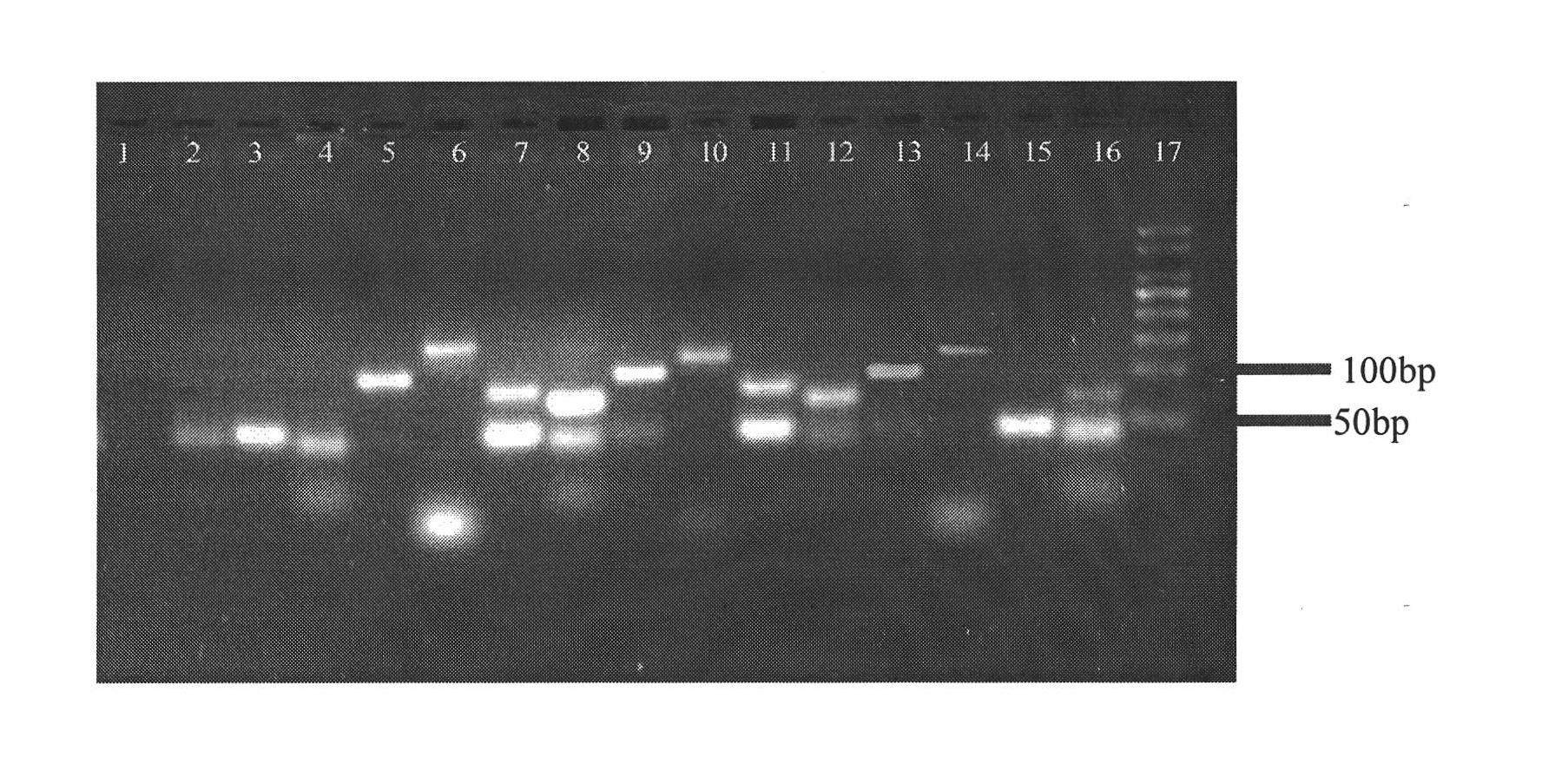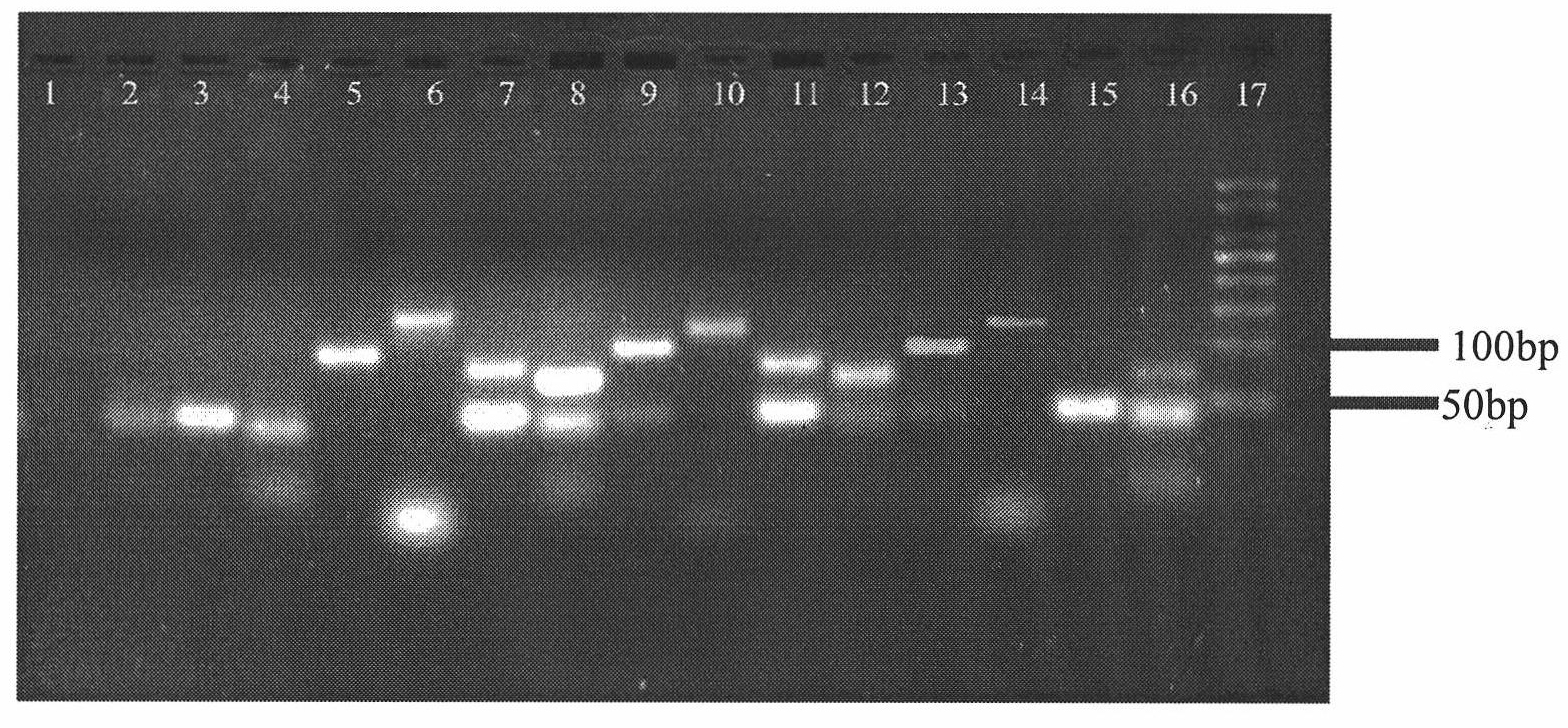Method for extracting DNA from formalin fixed hair
A formalin and hair technology, applied in DNA preparation, recombinant DNA technology, sugar derivatives, etc., can solve the problems of too long soaking time in antiseptic solution, reduced activity of active sites, difficulty in extracting genetic material, etc. Time for hair digestion, increased surface area, method efficient effect
- Summary
- Abstract
- Description
- Claims
- Application Information
AI Technical Summary
Problems solved by technology
Method used
Image
Examples
Embodiment 1
[0009] Take 20cm of the hair shaft 2cm away from the hair follicle from the hair fixed in formalin for 10 years. Wash with NaOH for 5 minutes, then wash with sterile 2.0% HCl for 5 minutes, then rinse with sterile distilled water for at least 3 times, then wash with 75% and absolute ethanol in turn, and dry it for later use.
[0010] Grind the dry hair in a homogenizer filled with 300 μl of sodium citrate repair solution with a pH of 6.0 and a concentration of 0.01 mmol / L at 2°C, until the dry hair fragments cannot be seen with the naked eye, and transfer the grinding solution to In a new EP tube with a sterilized volume of 2ml, the homogenizer was washed twice with an equal volume of fresh repair solution and transferred to the EP tube, and then repaired in a boiling water bath for 8 minutes. After the restoration was completed, when it was naturally cooled down to room temperature, an equal volume of absolute ethanol was added and mixed evenly, then left at room temperature ...
Embodiment 2
[0016] Take hair that has been fixed in formalin for 30 years, and cut 20cm from the hair shaft 2cm away from the hair follicle. Wash with 2.0% NaOH for 5 minutes, then wash with sterile 2.0% HCl for 5 minutes, then rinse with sterile distilled water for at least 3 times, then wash with 75% and absolute ethanol once respectively, and dry it for later use.
[0017] Preparation and repair treatment of repair samples: Grind the dry hair in a homogenizer filled with 300 μl of sodium citrate repair solution with a pH of 6.0 and a concentration of 0.01 mmol / L, so that the dry hair fragments cannot be seen with the naked eye. , transfer the grinding solution to a new EP tube with a sterile volume of 2ml, wash the homogenizer twice with an equal volume of fresh repair solution and transfer them to the EP tube, then repair in a boiling water bath for 15 minutes. After the restoration was completed, when it was naturally cooled down to room temperature, an equal volume of absolute ethan...
Embodiment 3
[0021] From Mui hair in the Qing Dynasty, Mui 300 years ago, 20cm of the hair away from the hair follicle was taken from the hair. Wash with sterile 2.0% NaOH for 5 minutes, then wash with sterile 2.0% HCl for 5 minutes, rinse with sterile distilled water for at least 3 times, wash with 75% and absolute ethanol in turn, dry and set aside .
[0022] Repair sample preparation and repair treatment: Grind the hair dry in a homogenizer filled with 300 μl of sodium citrate repair solution with a pH of 6.0 and a concentration of 0.01 mmol / L at 5°C until the dry hair fragments are invisible to the naked eye , transfer the grinding solution to a new EP tube with a sterile volume of 2ml, wash the homogenizer twice with an equal volume of fresh repair solution and transfer them to the EP tube, then repair in a boiling water bath for 5min. After the restoration was completed, when it was naturally cooled down to room temperature, an equal volume of absolute ethanol was added and mixed ev...
PUM
 Login to View More
Login to View More Abstract
Description
Claims
Application Information
 Login to View More
Login to View More - R&D
- Intellectual Property
- Life Sciences
- Materials
- Tech Scout
- Unparalleled Data Quality
- Higher Quality Content
- 60% Fewer Hallucinations
Browse by: Latest US Patents, China's latest patents, Technical Efficacy Thesaurus, Application Domain, Technology Topic, Popular Technical Reports.
© 2025 PatSnap. All rights reserved.Legal|Privacy policy|Modern Slavery Act Transparency Statement|Sitemap|About US| Contact US: help@patsnap.com


